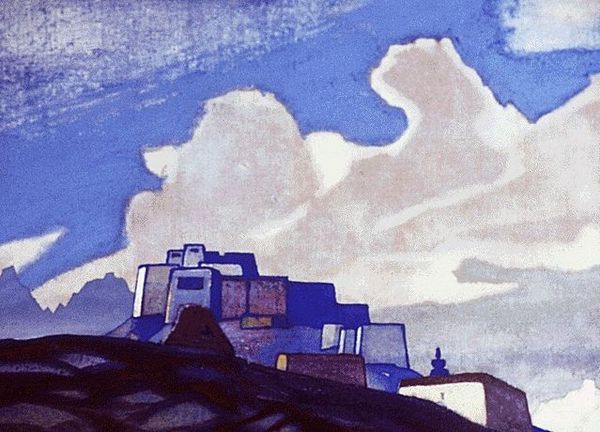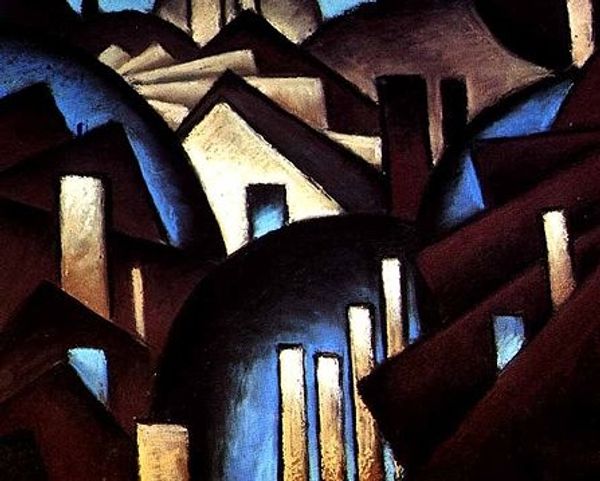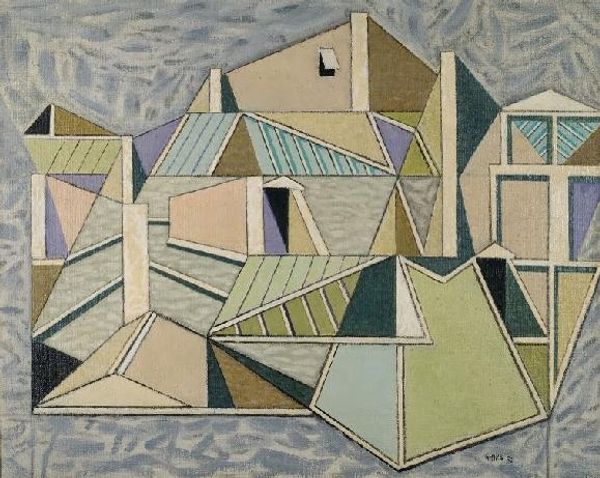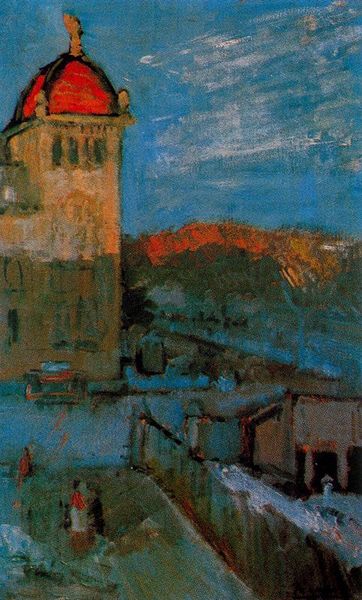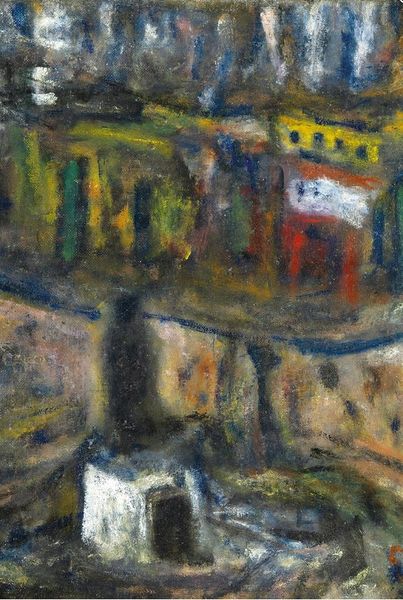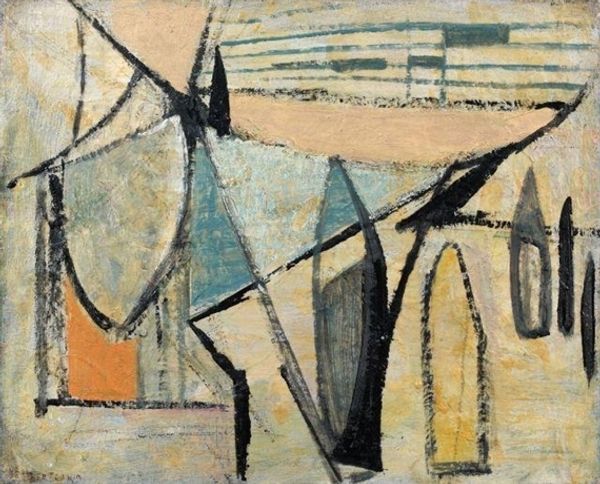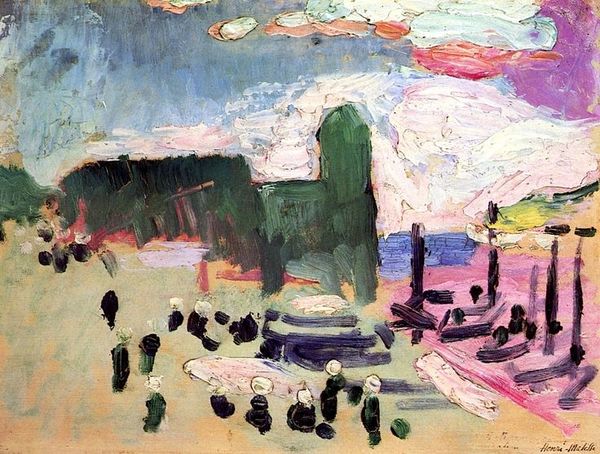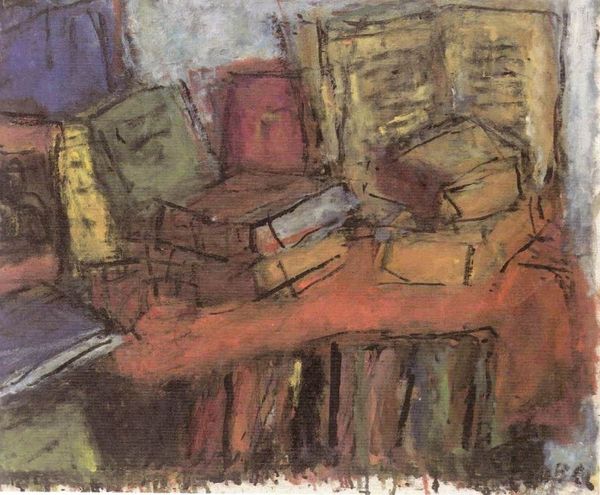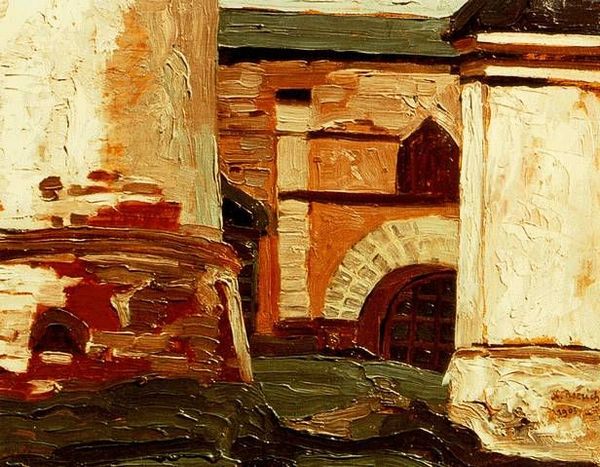
painting, oil-paint
#
cubism
#
painting
#
oil-paint
#
oil painting
#
cityscape
#
modernism
Dimensions: 71 x 112 cm
Copyright: Public domain US
Editor: This is “The Roofs of Barcelona,” an oil painting by Pablo Picasso from 1903. The monochromatic blues create such a somber, almost oppressive mood. What do you see in this piece? Curator: The dominance of blue certainly sets a tone, doesn't it? But for me, it’s less about simple sadness and more about understanding the socio-political context Picasso was navigating at that time. This work emerges from his Blue Period. Consider the working class neighborhoods of Barcelona then – poverty, social unrest, the weight of tradition. The blue isn't just a color; it's a symbol of their lived experiences, their struggles with alienation and marginalization. Do you see the city's architecture becoming almost abstract? Editor: I do. It’s like he’s deconstructing the city into shapes, almost like early Cubism. Curator: Exactly! Picasso is not just depicting what he sees but exploring how urban environments can shape and constrain human lives. What’s missing from this cityscape? Editor: People, definitely. It feels so empty. Curator: The absence is powerful. The architecture looms over us, almost dehumanizing. It mirrors a system where the individual can be overlooked or even crushed by societal structures. How might we view this today through the lens of urban development and gentrification? Editor: So, it's less about the beauty of Barcelona and more about the implications of living within its structures and, more broadly, within systems of power? Curator: Precisely. It’s a critique embedded in the very fabric of the paint, questioning who benefits from the city and who is made invisible. It also challenges us to think about art as a site of resistance and social commentary. Editor: I’ve always seen it as a pretty picture, but I can’t unsee the critique now! Curator: Which makes this artwork so successful; there is so much below the surface for the observant and historically aware viewer to consider.
Comments
No comments
Be the first to comment and join the conversation on the ultimate creative platform.
